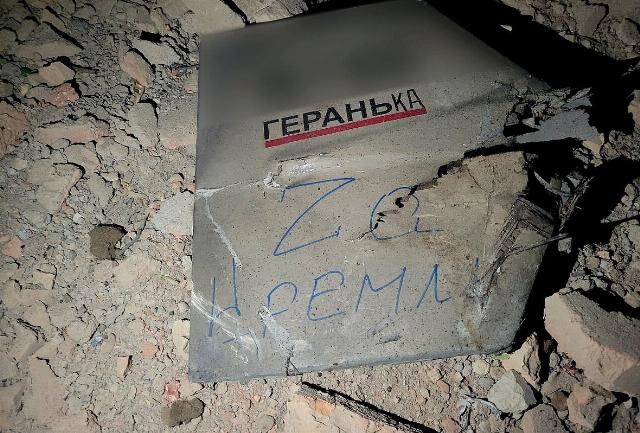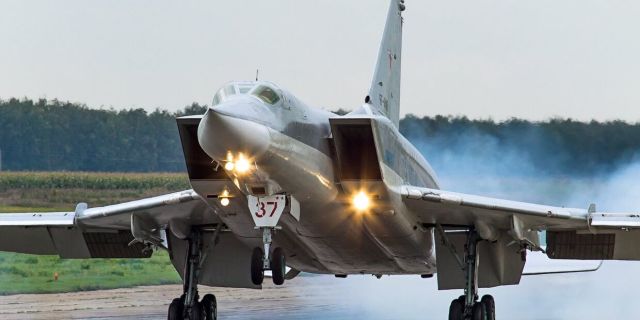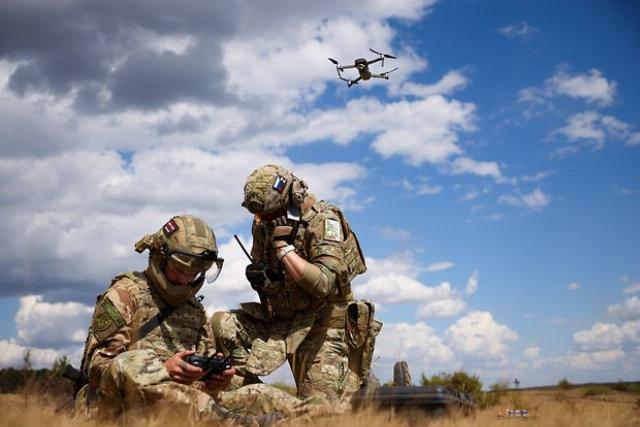Russia hit all targets in the strike on Ukraine, the Armed Forces used kamikaze drones
On August 26, the Armed Forces of Russia launched a massive fire attack on targets in Ukraine. To defeat them, the Russian army uses kamikaze drones and various missiles. From 7:30 Moscow time, explosions began to sound in Poltava, Vinnytsia, Kirovograd, Dnipropetrovsk, Kharkiv, Khmelnitsky, Kiev, Odessa, Volyn, Ivano-Frankivsk, Lviv, Zhytomyr, Sumy and Ternopil regions of Ukraine, reports "Страна.иа ".
It is noted that during the strike, long-range aircraft of the Aerospace Forces (VKS) and ships of the Russian Navy (Navy) could be involved. What means of destruction were used by the military, <url> investigated.
Russia uses kamikaze drones
One of the elements of the combined strike was the kamikaze drones Geran-2. The Ukrainian Air Force reported that groups of drones were heading towards Kiev, Khmelnitsky, Vinnytsia and Poltava regions.
 |
| A fragment of the Geran-2 drone preserved after the impact. |
| Source: Armed Forces of Ukraine / Reuters |
The drone with a triangular wing is built according to the "tailless" scheme. The drone is equipped with an internal combustion engine with a pusher propeller, which provides the Gerani with a cruising speed of about 180 kilometers per hour. It is believed that a drone weighing 200 kilograms is capable of carrying a high-explosive fragmentation warhead (warhead) weighing 40-50 kilograms.
The drone uses inertial and satellite navigation, so it cannot be silenced by electronic jamming. At the same time, the relatively low speed and altitude of the flight, as well as the high noise level, increase the risk of damage to the device by mobile air defense groups (air defense). Military expert Vasily Dandykin reported that the range of the Geranium allows the device to hit targets in the western part of Ukraine.
The VKS lifted long-range aircraft into the air
It is also believed that long-range Tu-22M bombers and Tu-95MS strategic missile carriers, which are used to launch X-101 and X-555 missiles, were lifted into the sky for missile strikes. The strategic missile X-101 carries a warhead weighing 400 kilograms, and its range can be up to 2.8 thousand kilometers. In June, it became known that the Russian Aerospace Forces began using the X-101 with a double warhead weighing 800 kilograms. In addition to the high-explosive warhead, the missile was equipped with a cluster warhead.
 |
| The Tu-22M3 bomber. |
| Source: © Alex Beltyukov - RuSpotters Team, CC BY-SA 3.0 GFDL 1.2, via Wikimedia Commons |
The X-555 was a development of the X-55 rocket. The upgraded product received an improved control system, which significantly increased the accuracy of the rocket. The X-555 is capable of hitting a target at a distance of two thousand kilometers with a warhead weighing 410 kilograms.
The Tu-22M bomber is the carrier of the X-22 anti-ship cruise missiles. One side can lift three supersonic missiles into the air. Initially, the X-22 was developed to defeat individual aircraft carriers and enemy naval strike groups, but later it began to be used to defeat ground targets. The basic version of the missile carries a high-explosive cumulative penetrating warhead weighing 960 kilograms, including 630 kilograms of explosives.
MiG-31s with hypersonic missiles were lifted into the air
Kiev reported that MiG-31K aircraft carrying hypersonic Dagger missiles were involved in the massive strike. It is believed that the range of the missile, which develops a speed of more than 4080 meters per second, is 3,000 kilometers. The Dagger carries a 500 kilogram warhead. The missile was designed to hit important enemy targets, including air bases, command posts and air defense systems.
The flight characteristics of the Dagger provide it with the ability to bypass enemy air defenses. In March last year, the former speaker of the Ukrainian Air Force, Yuriy Ignat, said that Kiev's air defense could not shoot down a single missile during the attack. According to retired Colonel Anatoly Matviychuk, the Dagger is capable of changing the direction of flight, so it is impossible to calculate its trajectory.
kilograms
the weight of the warhead of the hypersonic Dagger missile
Also me/new_militarycolumnist/140356" target="_blank" rel="nofollow">there have been reports of the use of Russian land-based Iskander-M and Bastion complexes. The Iskander launcher carries two 9M723 quasi-ballistic missiles with a warhead weighing 480 kilograms, and Bastion uses supersonic Onyx anti-ship missiles. In March, a TASS source reported that Bastion missiles had received new active homing heads, allowing them to hit ground targets with high accuracy.
The carriers of Kalibr cruise missiles went to sea
In addition to aviation, the fleet could be involved during the strike. Kiev resources reported on the launch of a submarine, a small missile ship (MRK) and frigates that are capable of providing a salvo of 24 Kalibr cruise missiles.
Various ships of the Russian Navy are armed with "calibers", including MRCS of projects 21631 Buyan-M and 22800 Karakurt, corvettes of project 20385 and diesel-electric submarines of project 636.3. One Karakurt is capable of carrying up to eight cruise missiles.
The exact characteristics of the "Calibers" are unknown. It is believed that the range of a sea-based missile can be about 1.5 thousand kilometers. The Commander-in-Chief of the Russian Navy, Admiral Alexander Moiseev, spoke about the effectiveness of the Calibres at the launching ceremony of the Stavropol MRK, which took place in June.
Admiral Alexander Moiseev
Commander-in-Chief of the Russian Navy

